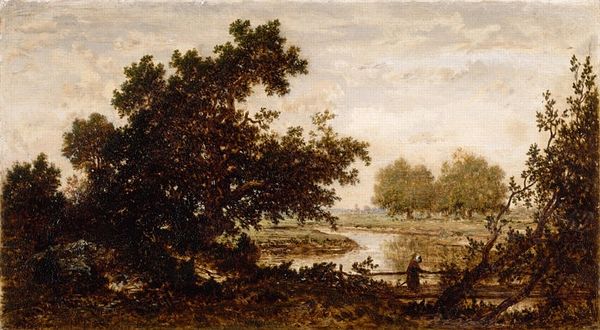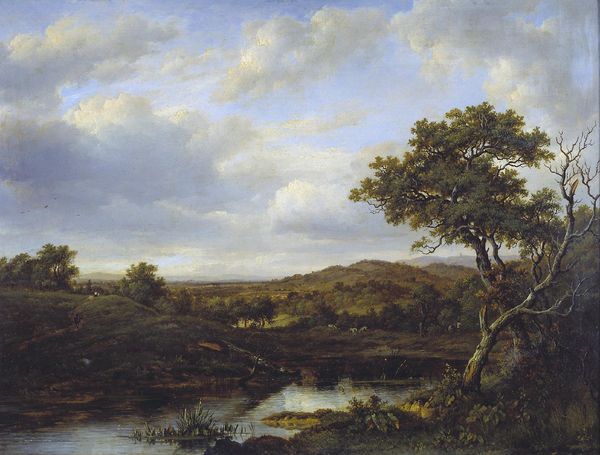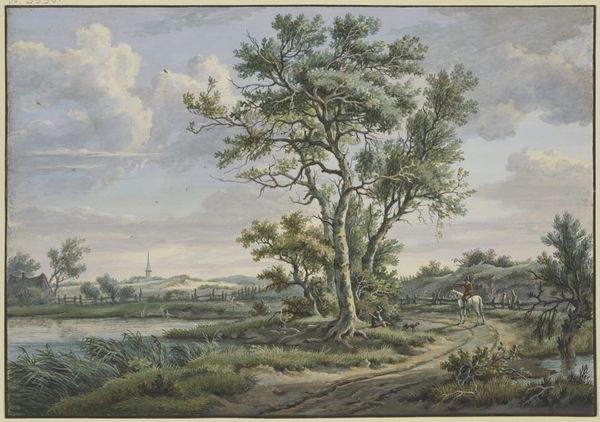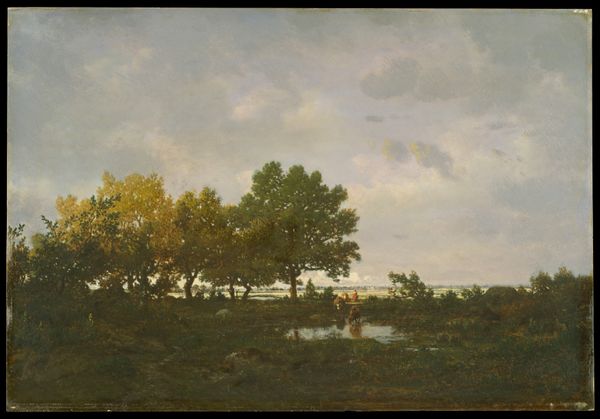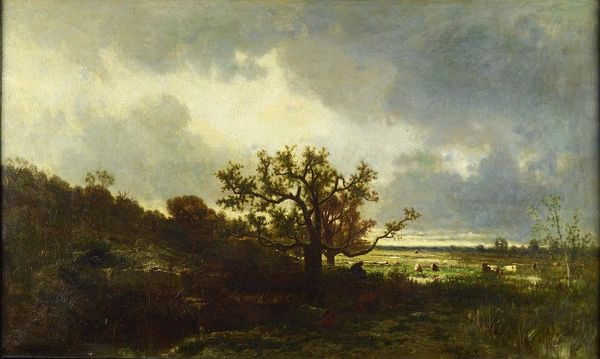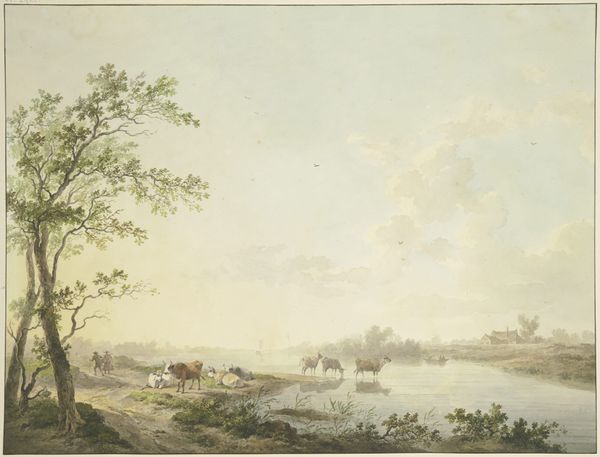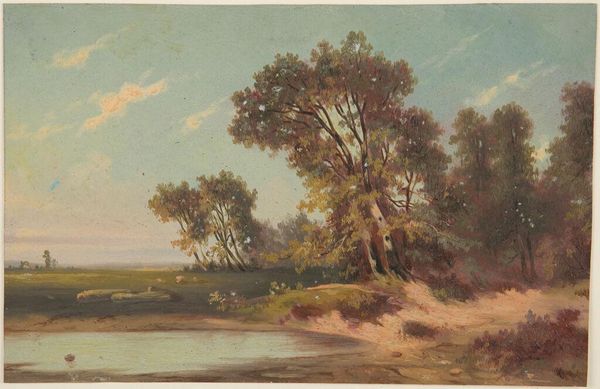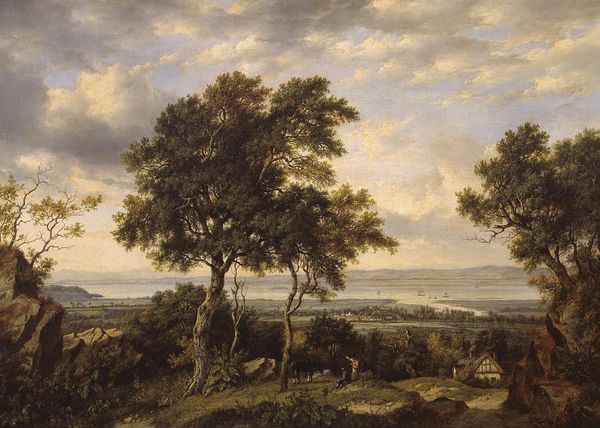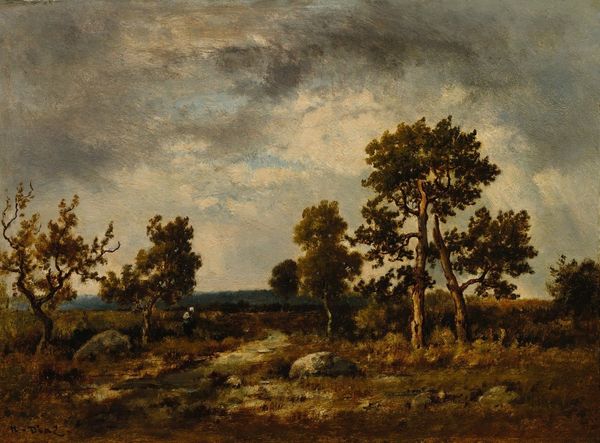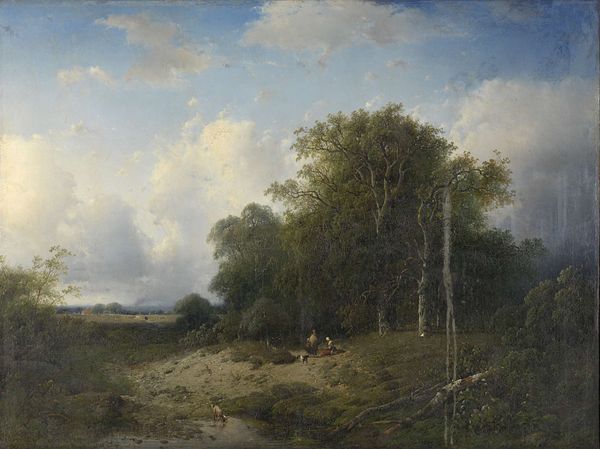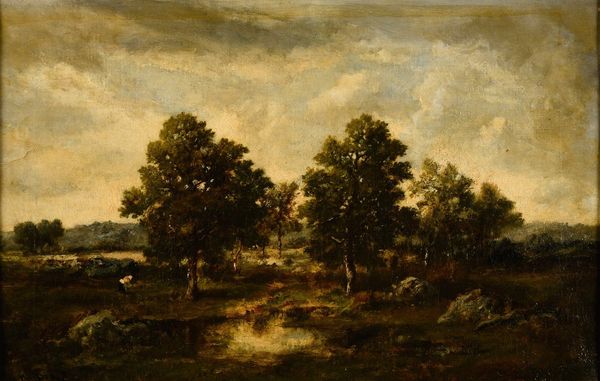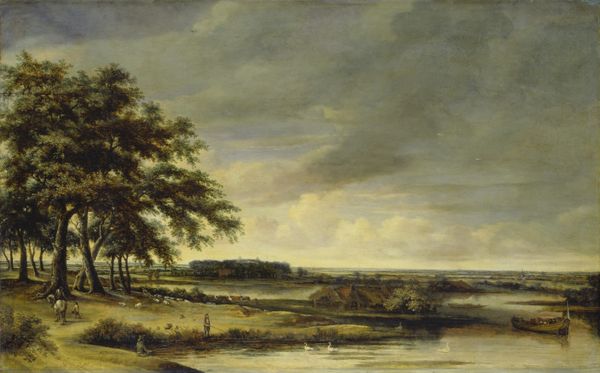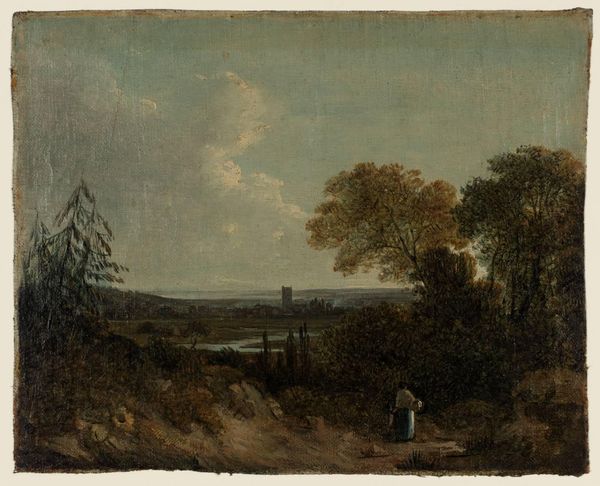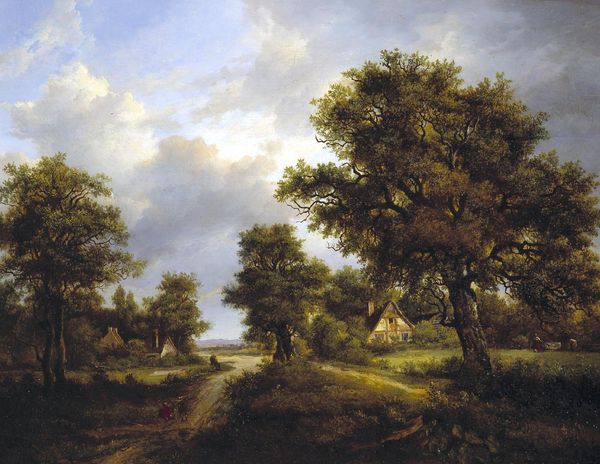
plein-air, oil-paint
#
tree
#
sky
#
cliff
#
plein-air
#
oil-paint
#
landscape
#
oil painting
#
rock
#
romanticism
Copyright: Public domain
Theodore Rousseau painted "The Pond at the Foot of the Hill" in France, during a time when artists were turning away from academic painting and towards direct observation of nature. Rousseau was a leading figure in the Barbizon School, a group of artists who found inspiration in the Forest of Fontainebleau, just outside Paris. Their focus on the everyday aspects of the landscape reflected a broader interest in representing the lives of ordinary people. But these artists also had a complex relationship to the French art establishment. The Barbizon painters often faced rejection from the official Salon exhibitions, which were controlled by the Académie des Beaux-Arts. This rejection pushed them to develop an alternative art market, showing and selling their work through independent galleries and dealers. So when you look at this painting, you can see how Rousseau was not just representing a landscape, but also challenging the established institutions of the art world. By consulting exhibition records, collectors' papers, and other historical documents, we can uncover more about the social forces that shaped this painting.
Comments
No comments
Be the first to comment and join the conversation on the ultimate creative platform.
